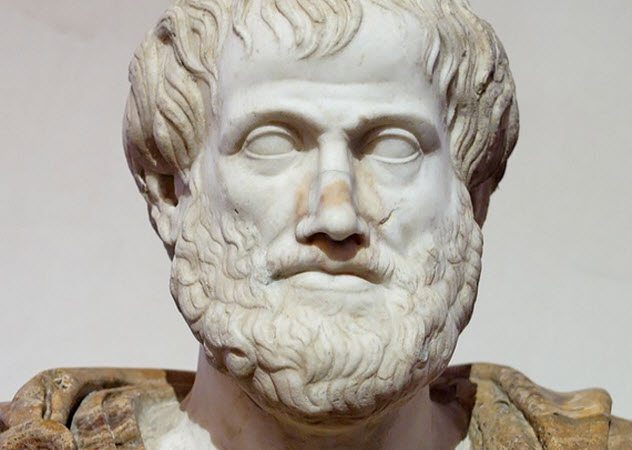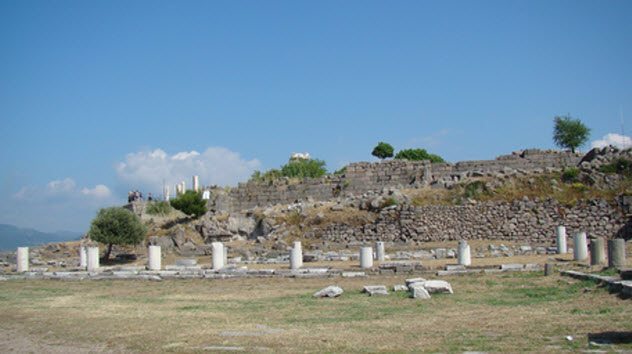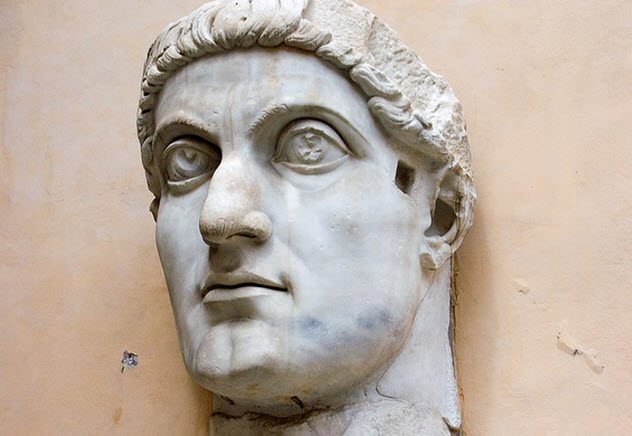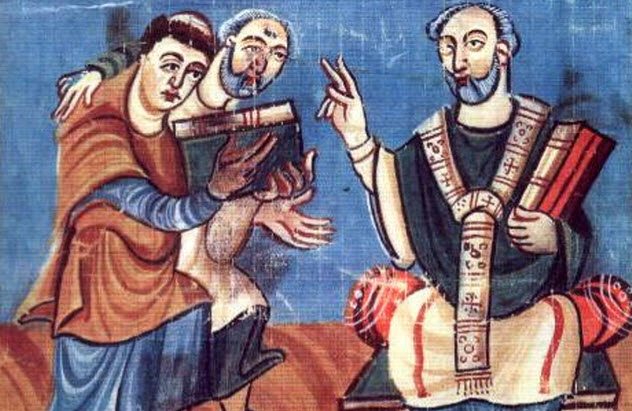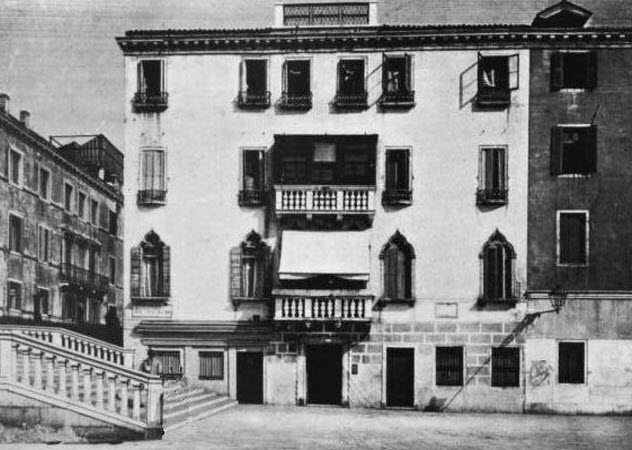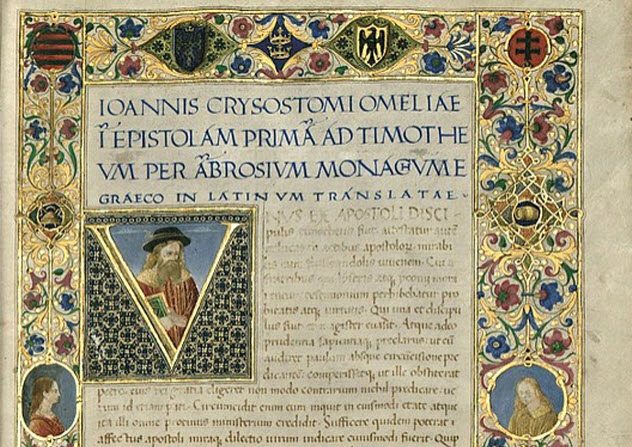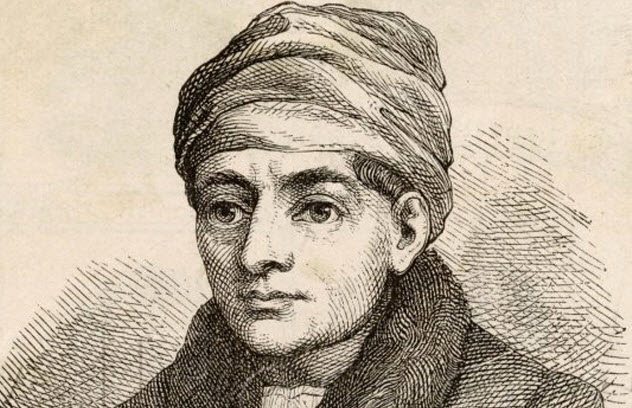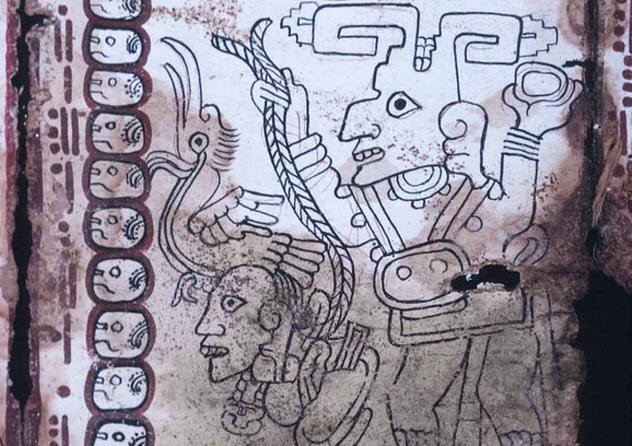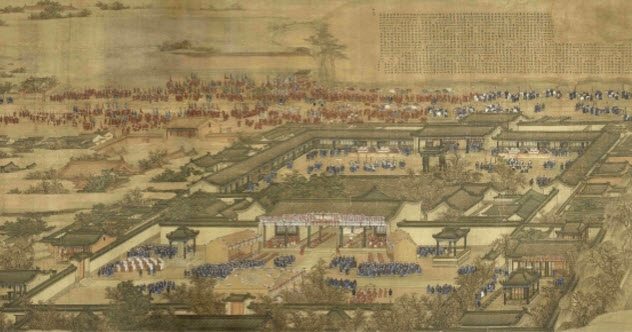Even the exact date of the library’s destruction remains unknown. However, there are a number of other notable libraries which have also been lost over time, leaving many unanswered questions about their contents and the ways in which they disappeared. The following list will take a chronological look at 10 such lost book collections of the past and the uncertainties which surround their various fates.
10 The Library Of Aristotle
In 335 BC, Aristotle moved to Athens where he founded a school at the Lyceum. He began to build a formidable collection of books, which would become the very first private library in Europe. It has been said that the Library of Alexandria took inspiration from his methods when organizing and developing their own collection. Following Aristotle’s death, the library was maintained by his former student Theophrastus. But it fell into decline following the latter’s demise, and ambiguity exists over what became of the substance of the collection.[1] Although it has been argued that many of these books may have ended up in the possession of Neleus of Scepsis, there has also been speculation that some of his books may have found their way into the contents of the Library of Alexandria. However, the destruction of that ancient library means that we will never know.
9 The Library Of Pergamon
The great rival to the status of Alexandria’s collection was the Library of Pergamon. Pergamon (aka Pergamum) was an ancient city developed by the Attalid dynasty into a powerful kingdom that was situated in what is now part of present-day Turkey. A degree of mystery surrounds the library’s decline, however, especially the question of whether its collection played a role in the relationship between Marc Antony and Cleopatra. The main source of the speculation is found in the work of the historian Plutarch, who chronicled the lives of many of the most notable Greeks and Romans in his Parallel Lives biographical collection. In the Life of Antony, Plutarch recounts a story of Antony taking away 200,000 of Pergamon’s volumes, intended as a gift for Cleopatra, which accounted for the vast majority of the library’s collection. It has also been argued that the donation may have been intended to replace materials from the Library of Alexandria that had been damaged during Caesar’s earlier visit. Whatever the truth of this, an examination of the ruins of the site of the library did support the idea that the library could have possessed as many books as the legend suggested.[2]
8 The Imperial Library Of Constantinople
The Imperial Library of Constantinople was one of the last great libraries of the ancient world to be founded but one of the longest to endure. It was begun by Emperor Constantine I. He ordered works of classical literature and a number of religious texts to be copied from fragile papyrus to more durable parchment to prevent the loss of important materials.[3] The work was continued by his son, and from these beginnings, the library eventually grew to a collection of over 100,000 volumes. Although it would outlast other ancient libraries like those of Alexandria and Pergamon, Constantinople’s Imperial collection would also eventually be destroyed. However, uncertainty remains over the point in history when this occurred. There are a number of theories, including the suggestion that it was destroyed during the Fourth Crusade of 1204 or that it happened during the 1453 conquest of the city by the Ottoman Empire. It has also been argued that it may have gradually disappeared over a long period of time due to a number of different fires.
7 The Library Of Alcuin Of York
York, then known as Eboracum, was the place where Constantine I had first been declared Roman emperor. York itself later became an important place of learning in Europe during the eighth century because it was the home of the renowned scholar Alcuin and his library of manuscripts. Alcuin also wrote a poem about his time there called “On the Saints of the Church at York.” It mentions the range of information that scholars using the library were able to access. Following his time in York, Alcuin went on to become an adviser to Charlemagne.[4] However, the library he left behind eventually disappeared and no trace can be found of it today. Its fate remains a mystery, with some arguing that it may have been sent elsewhere in Europe and dispersed into a number of different collections. Others speculate that it was destroyed when the Vikings attacked York in the late ninth century.
6 The Library Of Petrarch
The poet Francesco Petrarca, commonly known as Petrarch, built a collection of books from across Europe. It eventually became one of the largest libraries of its kind in the world during the 14th century. His plan was to ultimately give the library in its entirety to the city of Venice, which was to make this library available to the public. But this plan never materialized. Much of the collection was said to have been dispersed to various other locations, and the volumes which did remain in Venice were said to have mysteriously crumbled. A few volumes are known to now be in the possession of the Bibliotheque nationale de France, but uncertainty remains over the fate of many more. It is unclear why there was so little interest in Petrarch’s proposal, why the volumes that did remain in Venice were handled so carelessly, and what became of many of the library’s books that were said to have been transported out of the city.[5]
5 The Library Of Charles V Of France
In the late 14th century, Charles V of France began a collection of works at the Louvre Palace that was estimated to contain 917 manuscripts. This became extremely influential on the development of libraries in France and also inspired French speakers in other countries to begin library collections. Following the death of Charles, his collection was moved and later dispersed. But Louis XI would later begin another library at the Louvre. It is this collection that would eventually lead to the foundation of the country’s national library, the Bibliotheque nationale de France. However, due to its dispersal, it is unclear what happened to all the manuscripts in Charles’s original library. Some of these works were brought to London, where they are now held by the British Library. But the fate of many others remains unknown.[6]
4 The Bibliotheca Corviniana
One of the most impressive libraries of the Renaissance period was the Bibliotheca Corviniana. It was collected by Matthias Corvinus, king of Hungary from 1458 to 1490. It contained over 2,000 works, and was considered by some to be second only to the collection held by the Vatican. Some books from Constantinople were also said to have ended up in this collection. Following the Battle of Mohacs in 1526, in which Hungary was defeated by Ottoman Empire forces, much of the library seems to have been destroyed in the subsequent plunder of the city of Buda. Of the works once held by the library, 216 were later traced. But most of the others have been lost, with some having been stolen and taken elsewhere in the aftermath of the events. However, as not all books in the library were given the markings which identified them as a part of the royal collection, it is difficult to know for sure if any books in addition to those 216 still exist.[7]
3 The Library Of Regiomontanus
The Bibliotheca Corviniana also served as a valuable place of training for Johannes Muller von Konigsberg, a 15th-century astronomer and mathematician who would become best known under the name Regiomontanus. In addition to his accomplishments in astronomy, Regiomontanus also became renowned for the library he was said to have acquired during his lifetime. Like so many of the libraries on this list, his own collection was subsequently lost, but its legend has endured. Curiously, this library was not mentioned in any source actually produced during his lifetime. It seems that only after his demise did the legend surrounding his collection of books begin to grow. This raises the question of whether this library was necessarily everything that people believed it to be as its alleged contents have not been conclusively established.[8]
2 The Libraries Of The Maya
The Mayan civilization of Mesoamerica developed a writing system which they used to record information about their culture on folding books, known as codices. These book collections were mostly destroyed during the Spanish conquest of Yucatan during the 16th century, and only a few codices are known to have survived this period. The Grolier Codex, recovered in the 1970s, was the last of the four to be found. However, uncertainty remains over its status as arguments have been made that it could be a forgery. Although a 2016 study argued that it was genuine, another scholar disagreed the following year and said there was still doubt about its authenticity. So it remains a source of contention among researchers.[9]
1 The Library Of The Hanlin Yuan
During the Boxer Rebellion in 1900, one of China’s most important libraries suffered the loss of centuries’ worth of materials. Much of the contents of the Hanlin Yuan, one of the key centers of learning in Peking (now known as Beijing), was destroyed when the building was set on fire during the conflict.[10] The library was said to have included an encyclopedia of over 11,000 individual volumes, covering hundreds of years of Chinese history. The cause of the fire was a source of dispute. It is also uncertain whether all the volumes within the library were entirely lost. It has been speculated that many books may have been stolen in the aftermath of the event. Although some have subsequently been returned to China by countries involved in the original conflict, it is unknown if more volumes remain in the hands of others. Jane Alexander is a freelance writer.
